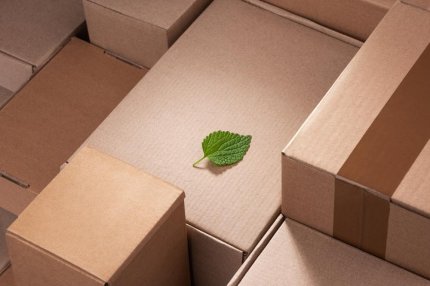The world of packaging is changing with the introduction of new pEPR legislation coming through in 2025, which includes the Recyclability Assessment Methodology (RAM) – the definition of how easy a product is to be kerbside recycled. This will be used to calculate modulated fees for the EPR legislation and makes using sustainable packaging a new top priority.
The new legislation will help drive recycling and sustainability within packaging use, sustainability is no longer a ‘nice-to-have’, it’s become a ‘must-have’ for businesses.
With these significant changes within the industry, we’ve assembled the top 5 trends that we think will start emerging in 2025, how these trends will affect you and how working with RAJA can help you overcome them:
1. Product Data is Key
The first trend for 2025 is product data for reporting on the new legislation. Some companies will have made a submission already, while some will do it for the first time in 2025. This will be for packaging placed on the market in 2024.
In 2025, the same reporting will be required by material, but the individual product will be graded Red, Amber or Green based on how easy it is to recycle. This grading will trigger modulated fees, and more details on this will be available once the final RAM document has been published.
For ALL the products you purchase from RAJA, we can make the data available for you to complete your pEPR and RAM details. Get in touch for more details.
2. More Mono Materials for more Sustainable Packaging
Using mono materials in packaging, the entire product made from one material type, will be the way forward in 2025. This will make reporting easier, reduce your RAM fees as it will not be a Fibre-Composite, plus it will make it easier for the consumer to recycle the product thus helping to create a circular economy.
Raja can help with this as we have a number of off the shelf designs for common packaging solutions that either contain mono materials or can easily be separated. We have a range of cardboard and postal e-commerce boxes, that are all fully recyclable and make for great sustainable packaging.
For mailers we have our popular paper padded mailers, cardboard envelopes, and our very own bubble lined mailer where the bubble can be removed from the paper outer to enable the 2 materials to be recycled.
For customised solutions, our packaging experts can incorporate this into your custom design.
3. A need to Redesign or Reduce materials
Redesigning your solution or reducing the material being used would not only save you money on the product itself but, because the legislation is based on material weight, it would save on your pEPR obligations.
There are some simple things you can do to reduce the material without it being detrimental to the performance.
- Use the correct size box to avoid unnecessary voidfill. This not only adds weight due to the larger box, but you also costs of additional voidfill and the weight of that. Raja has over 900 box sizes available, so we can always supply the best size.
- If you need many different sizes at the same time, and storage space is an issue, you could opt to use an adjustable box. This box has many scores that can be easily cut down and folded at the optimum height for your product, thus saving on the use for voidfill. Have a look at our range of variable height solutions.
- Reduce the material of the product. A lot of packaging solutions are over spec’d, so a small downgrade might be an option. For example, if you are using a triple wall box then a switch to a heavy duty double wall box may be a solution.
4. A boom in Smart Packaging
Smart Packaging, sometimes called Connected Packaging, is packaging that can be transformed into a digital experience. This is achieved by printing packaging with QR codes, barcodes or images that can be scanned with a smart device that launches a digital experience in a browser-based app.
This can be used to allow access to information about the packaging, be it environmental information, recyclability, right the way through to brand and loyalty options. Our carton packaging contains a QR code that offers recycling advise, and this is just one example of many applications that could make your packaging more sustainable.
If this is something you could use as part of your solution, speak to our Packaging Specialists.
5. Automation to cut waste and loss
Automation is an option to not only save you time and money on the speed of packing, but could also save you money on materials. Packaging machines are designed to optimise the amount of material used and, as mentioned earlier, the new pEPR regulations are based on weight. This material optimisation over a long period of time can lead a reduction in your pEPR costs along with the savings on material usage.
For more details on what automation could mean for you, take a look at our Warehouse Automation blog and if you want to find out more about how RAJA can help you handle your pEPR costs, get in touch with our sales team!




















